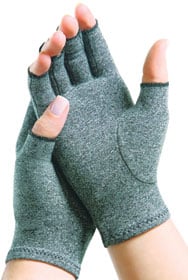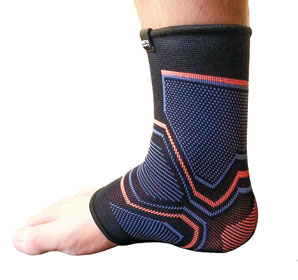This week You! talks to homeopath and herbal medicine expert, Dr. Siddiq Patni, on how to manage joint pain in winter...
 health
health
This week You! talks to homeopath and herbal medicine expert, Dr. Siddiq Patni, on how to manage joint pain in winter...
Joint pain can occur anytime throughout the year, however, the chilly and humid weather makes it hard to cope with the excruciating pain. When we are cold, our body restricts how much blood it sends around extremities, like our hands and feet, so that it can focus on supplying vital organs like the heart and lungs. This means the joints get less blood and, for some people, this can be quite painful. The soft tissues around the joints are less flexible when cold, so joints feel tight and stiff, resulting in more pain. In this regard, You! talks to homeopath and herbal medicine expert, Dr. Siddiq Patni, on how to manage joint pain in winters.
Causes of pain:
According to Dr. Siddiq Patni, the pain can be felt anywhere during winters. “It might be your knees, hips, hands or other joints of your body. Sometimes, there is a cause of joint pain (like any injury or overdoing normal, everyday activities, such as lifting heavy bags etc) that gets aggravated in winter. This joint pain ultimately results in arthritis, a very common problem that can take many forms. If simply stated, arthritis is inflammation of one or more joints,” explains Dr. Patni.
Due to barometric pressure
“The intensity of joint pain in winter is often linked to barometric pressure. In winter, there is a reduction in the pressure exerted by the air around us. This drop in pressure can cause the tissues around the joints to swell resulting in increased pain. The other possible cause of knee pain is that the fluid in tissues becomes more viscous during winter. And as a result of this increased viscosity, the elasticity of the muscles decreases, resulting in winter aches and pains,” says Dr. Siddiq Patni.
Arthritis and its symptoms
As mentioned above mild joint pain can lead to severe arthritis. Dr. Patni informs, “There are more than 100 different types of arthritis. Arthritis can vary from mild to severe cases. Common symptoms of arthritis are pain, swelling and redness around the joint, limited movement in the affected body parts, and stiffness. A doctor can prescribe medication or you can take over-the-counter pain relievers, but many people experience improvement simply by staying physically active along with one or more simple natural treatments.”
Manage the pain in winters
Even though the pain increases during winter, the following tips can help you withstand the season easier.
Physical activity: Want to make your joints work better? Then physical activity is what you need. It can help reduce winter aches and pains and enhance overall health. Low impact activities such as aerobics, swimming in a heated pool, weight training, and riding a stationary bicycle can reduce stiffness, increase the blood flow, and support the knees. Thus, joint pain can be well managed by doing exercises.
Eat a balanced diet: Go for a diet comprising low saturated fat, lean proteins, fibre, and refined carbs in order to improve body functions during winter. Drinking water throughout the day helps to reduce winter aches and pains. It is essential to consume digestible foods such as carrots and cucumbers, which have diuretic properties, and can help in eliminating waste products from the body.
Intake of Vitamin D: Vitamin D deficiency may worsen the pain. So make sure to take vitamin D supplements. Add vitamin D enriched foods in your diet like fish oil, which is a potent source of omega 3 fatty acids. Increase your intake of milk, a rich source of protein and calcium that aids in strengthening the bones. The best source of Vitamin D is sunlight so try walking in the morning around 9:30 to 11:00 a.m.
Some home remedies
Take a cup of warm water: Mix apple cider vinegar and honey (one teaspoon each) in water. Drink this daily in the morning for an alkalizing effect.
Ginger: It has natural anti-inflammatory properties. Take 6 teaspoons of dried ginger and 2 teaspoons of black pepper powder and grind. Take half a teaspoon of this  mixture along with water twice daily. Also, ginger oil, when applied on the affected area on a regular basis, can reduce pain, inflammation and stiffness.
mixture along with water twice daily. Also, ginger oil, when applied on the affected area on a regular basis, can reduce pain, inflammation and stiffness.
Mustard oil: Massaging with mustard oil works as a natural ointment and stimulates blood flow.
Warm some mustard oil. If you feel there is swelling, then mix an equal amount of onion juice in it. Rub it gently over the painful joint. Then cover the joint with plastic wrap and put warm towels. Repeat this remedy daily before going to bed for best results.
Turmeric: It contains curcumin that possesses anti-inflammatory properties. You can take 500 mg to 1,000 mg turmeric capsules three times per day. You can also drink fresh turmeric juice, or a glass of warm milk mixed with one teaspoon of turmeric powder daily before going to bed.
Epsom salt: It is a good source of magnesium that helps regulate the PH levels in the body. Mix Epsom salt and fresh lemon juice in equal amounts to half a cup of warm water. Take one teaspoon of the mixture twice daily, one in the morning and one at night. You can also add two cups of Epsom salt to warm bath water and soak in it.
Cinnamon: It has anti-inflammatory and antioxidant properties. Mix one and a half teaspoon of cinnamon powder and one tablespoon of honey in a cup of warm water and drink it every morning on an empty stomach. Do this daily for several days. You can also make a paste of cinnamon and honey and massage it gently on the painful area.